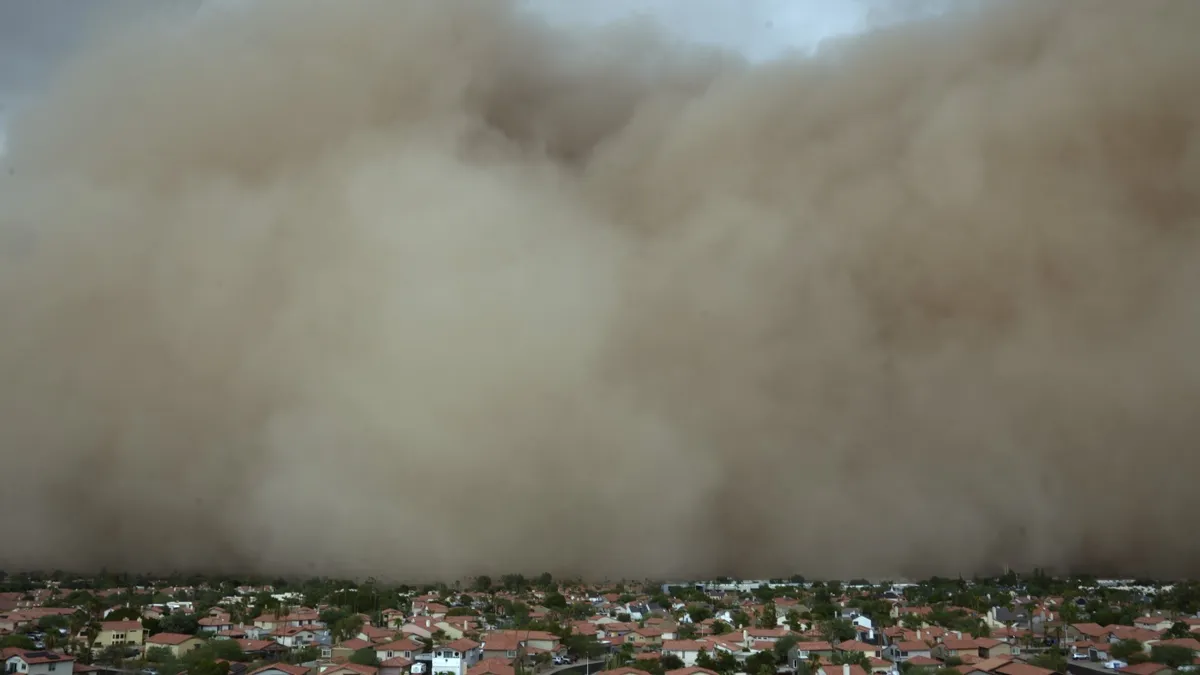
On Monday evening, parts of central Arizona were engulfed by a towering wall of dust, creating dramatic scenes that reverberated well beyond the borders of the Grand Canyon state. Meteorologist Mark O'Malley from the National Weather Service in Phoenix noted, “It was larger and it went through a metropolitan area so it gained a lot of attention.” This captivating yet concerning natural phenomenon, known as a haboob, has garnered significant media attention due to its striking visuals and impact on local communities.
A haboob is a type of dust storm that originates from powerful winds associated with thunderstorms. According to O'Malley, the recent haboob began its journey in southern Arizona around 3:30 p.m. local time, reaching the bustling city of Phoenix approximately two hours later. As it advanced through north-central Arizona, the storm gradually weakened but lasted about an hour in total. Accompanying the dust storm were intense thunderstorms, which contributed to its formation.
On the evening of the storm, over 39,000 households in Arizona experienced power outages, predominantly in Maricopa County, where Phoenix is located, as reported by NPR member station KJZZ. The haboob drastically reduced visibility to a mere quarter-mile across the city, prompting the state's Department of Transportation to advise drivers to avoid travel. In addition, flights at the Phoenix Sky Harbor International Airport were temporarily grounded due to the severe weather conditions.
So, how exactly do haboobs form? These dust storms occur when strong winds from a thunderstorm push air down and forward, effectively lifting dust and debris into the atmosphere. O'Malley elaborated, “The recent haboob that swept through Phoenix came after a series of severe thunderstorms in the area. That’s how these outflows form behind thunderstorms, pushing across the desert and transporting dirt into the Phoenix metro area.” The term “haboob” is derived from the Arabic word “haab,” meaning "wind" or "blow," and is commonly seen in arid regions like the Sahara Desert and the Arabian Peninsula.
While haboobs can create visually stunning scenes, they also pose significant dangers. Wind speeds can reach up to 60 miles per hour, creating dust walls that can rise as high as 10,000 feet. Though these storms are typically brief, lasting between 10 to 30 minutes, they have been linked to numerous traffic fatalities in the United States over the years. In a 2023 study by researchers from NOAA's Air Resources Laboratory, it was estimated that from 2007 to 2017, there were at least 232 deaths resulting from dust storm-related traffic incidents. Daniel Tong, one of the researchers, noted, “We found that dust events caused life losses comparable to events like hurricanes and wildfires in some years.” Increasing public awareness about the hazards of dust storms could potentially reduce traffic accidents and save lives.
The recent haboob in Arizona serves as a stark reminder of the power of nature and the importance of preparedness for severe weather events. Understanding the formation and dangers associated with haboobs can help residents stay informed and safe during such occurrences. As climate patterns evolve, awareness and education about dust storms will be crucial for minimizing risks and protecting communities.